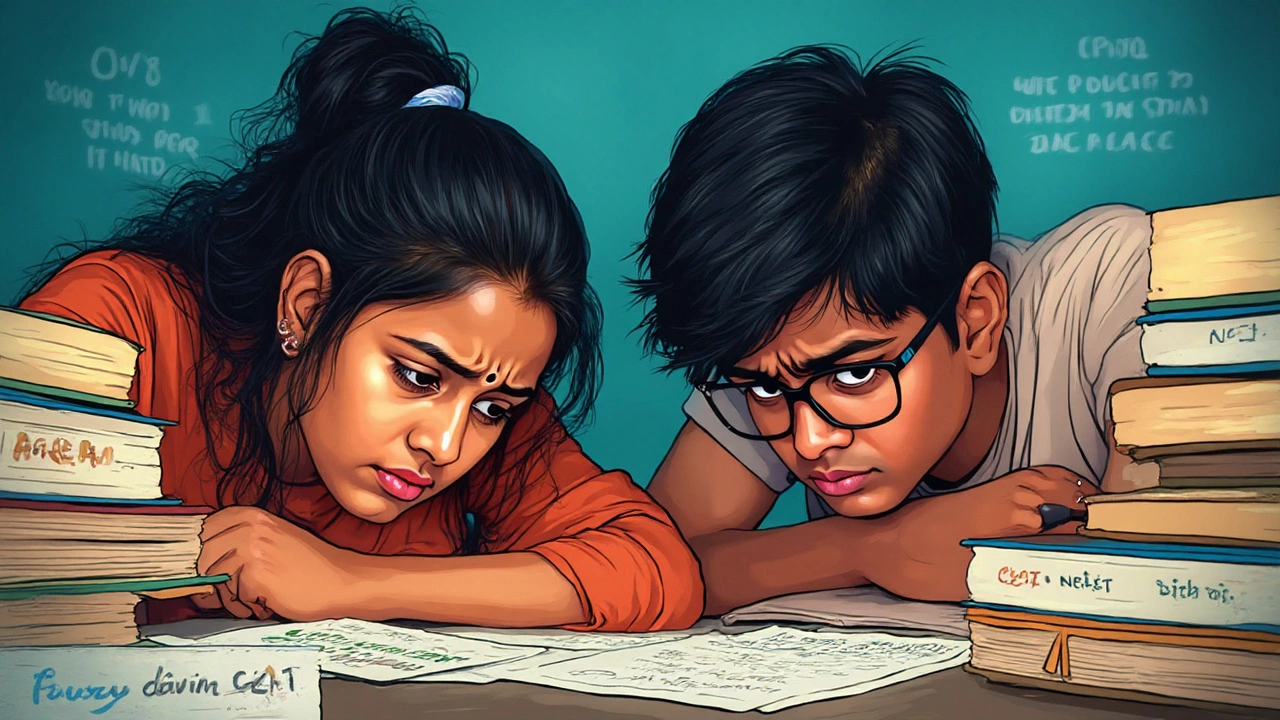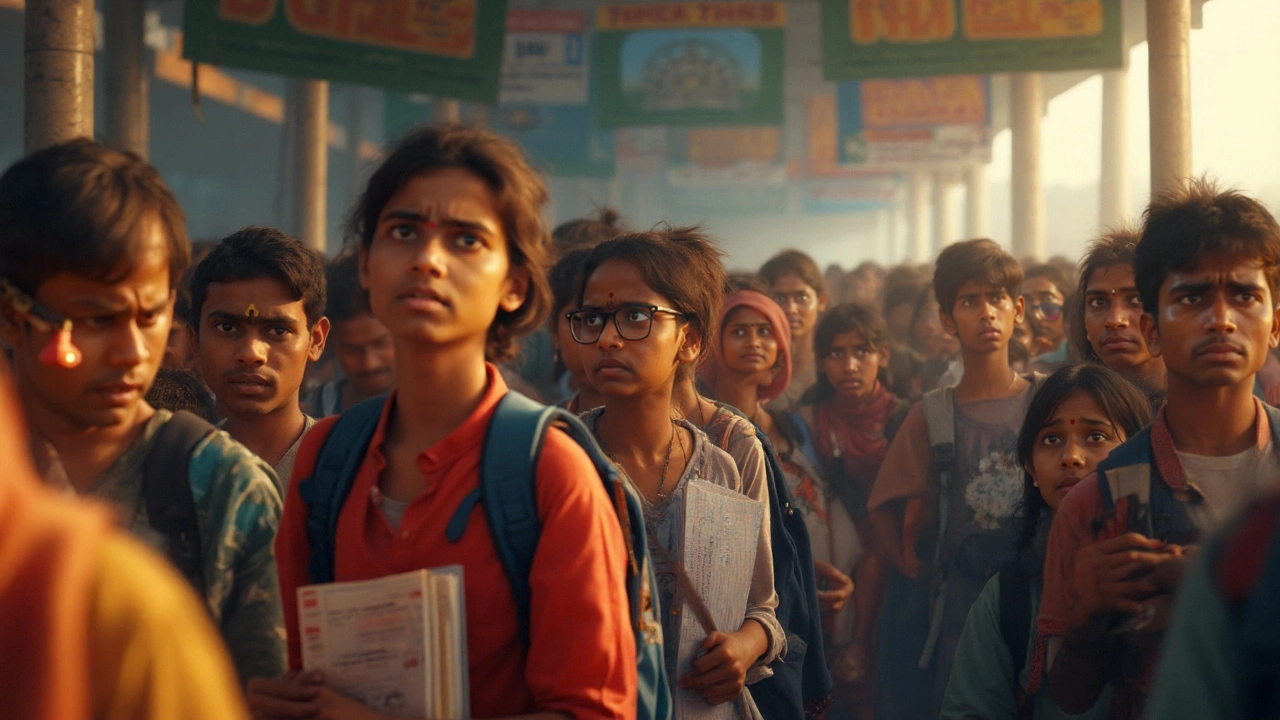The world of testing isn’t for the faint of heart. Some exams crush dreams and spark national debates about fairness. East or West, there are tests so cutthroat that making it to the finish line feels like beating a video game boss on impossible mode. If you’ve ever felt the weight of a big exam looming, imagine multiplying that anxiety by millions—because that’s what students face every year for the world’s most competitive entrance tests. We’re not just talking about SATs or a regular high school math test. These exams filter out thousands, sometimes millions, of bright minds for just a handful of golden seats. If you want to know which test tops the charts as the most competitive, buckle up. This is not your typical school pop quiz story.
The Global Giants: Which Exams Command the Fiercest Competition?
If you think sweating over finals is tough, meet the beasts of the exam world. In India, the UPSC Civil Services Exam literally decides who runs the country’s bureaucracy. Over a million apply, but only about 0.2% make it—which basically means you’ve got a better shot at landing on a reality TV show. Then there’s the IIT-JEE, the ticket to India’s elite tech colleges. We’re talking about a 1% acceptance rate for general category students, with the test spanning topics so deep, coaching centers have become a billion-dollar industry.
But that’s just India—a land obsessed with exams. Zoom out, and you’ll find China’s famed Gaokao, a two-day marathon exam that pretty much seals a teenager’s fate. It determines college admission for more than 10 million students every year. It’s so intense that parents gather at temples to pray on test day and some cities even cut construction noise near exam centers.
Head west, and you hit engineering and medical entrance exams in the U.S. The MCAT (Medical College Admission Test) is brutal for pre-med students. There’s the LSAT for law hopefuls, each with cut-throat prerequisites and mind-bending logical puzzles. But perhaps nothing stirs dread among American kids like the SATs and ACTs, especially since Ivy League colleges draw a hard line above a certain score and only the best get a shot. Acceptance rates at top U.S. colleges often slip below 5%, with Stanford and Harvard reaching as low as 3.19% (Harvard, 2025 stats)—and that’s after the SAT filters everyone out.
Some other exams deserve a special mention—South Korea’s Suneung (CSAT) is a national event; flights are grounded to keep noise to a minimum. Japan’s National Center Test splits hairs among students who’ve prepped for this showdown since elementary school. The French “agrégation” for teachers, the Russian Unified State Exam, and the British A-levels fight for spots too.
| Exam | Country | Applicants (2025) | Acceptance Rate |
|---|---|---|---|
| UPSC Civil Services | India | 1,100,000 | 0.2% |
| IIT-JEE | India | 1,500,000 | ~1% |
| Gaokao | China | 10,000,000 | 2-3% |
| MCAT | USA | 85,000 | 7% |
| CSAT/Suneung | South Korea | 500,000 | Varies (Top colleges < 1%) |
| Harvard Admissions | USA | 61,220 | 3.19% |
With stakes this high, some students prep from preschool, and private tutoring is a booming market. In some places, families spend up to 40% of their income on prep courses. If you grew up in a country with an intense testing culture, chances are, you’ve seen classmates burn out or even drop out because the pyramid gets thinner every step of the way.

What Makes an Exam “The Most Competitive”?
Numbers don’t lie, but they don’t tell the full story either. Sure, a 1% acceptance rate sounds terrifying, but there’s more to it than numbers. The length, complexity, and the very structure of the test often decide how competitive it really is. Think about the types of questions—you can try to memorize a fact, but writing an essay that cracks the logic of some twisted hypothetical? That’s a different level.
The Gaokao is famous for its essay prompts that can include philosophy or even quantum physics. India’s UPSC asks everything from geopolitics to economics to ancient literature. The U.S. MCAT throws science, critical reasoning, and mental stamina into the mix with a seven-hour marathon. Korean students must remember vast heaps of detail for CSAT, a single-day, life-defining trial.
Pressure isn’t just in the questions. Test day itself is a spectacle: In South Korea, the CSAT draws entire families to the sidelines, and police escort late students to their exam halls. In China, it’s not uncommon for students to attempt Gaokao three or more times, sacrificing years to keep trying for a spot in a top university. In India, rumors of paper leaks and cheating scandals make national headlines, sometimes leading to canceled results. The stress isn’t just academic—it’s cultural and personal. Some families move cities to put their children closer to top coaching institutes.
Let’s not forget the hidden layers—rigid quotas by caste, state, or region, adding more complexity. In countries like Japan, the university you get into can follow you throughout your professional life. In the U.S., affirmative action policies, legacy admissions, and regional quotas tip the scales, too. Every country has its own spin on what makes the race so fierce.
Many of these exams are also ever-evolving. The SAT has ditched its essay and gone digital; IIT-JEE questions got more conceptual over the years, not just rote; Gaokao’s provinces release different versions yearly. Exam bodies constantly tweak to reflect new learnings or block attempts at shortcuts.
If there’s one thing that connects all competitive tests, it’s the reward. Whether it’s a government job, a medical degree, or a spot at an elite college, the stakes are so high that everything—family pride, future prospects, and social status—can ride on a single number.

Tips and Insights: Facing the Fiercest Exams Head-On
If the idea of sitting one of these exams gives you cold sweats, take a breath. People do conquer them, and not always the ones you expect. There’s no cheat code, but smart strategies can shift the odds.
- Start early. The most successful students don’t binge-study at the last minute. An early start lets you layer knowledge over years (or at least months) instead of days.
- Use the right resources. Don’t overdo it with dozens of guides; stick to one or two authoritative texts and go deep. For IIT-JEE, for example, students swear by the standard NCERT textbooks for basics.
- Practice under actual exam conditions. Timer, silence, and zero distractions. It’s easy to ace a test at your desk with snacks, less so in a silent room with real stakes.
- Mock exams aren’t optional—they’re essential. For the Gaokao or Suneung, take full-length mocks to build real stamina. Your brain needs the practice as much as your memory does.
- Know your weak points. Focus more on what drags your score down, not what already comes easy.
- Take care of health. Extreme cases in Korea and China have shown what burnout can do. You lose recall, energy, even interest if you ignore sleep and exercise.
- Get advice from people who’ve been there. Online forums, Reddit threads, or YouTube breakdowns often give more useful, real-world insights than official guides.
- Don’t ignore the mental game. Meditation, proper breaks, and realistic goal-setting might sound basic, but top performers swear by them.
- For exams with essays or interviews, practice those just as hard as the multiple-choice blasts. Sometimes a single interview question can tip the balance, especially in government or medical entrance tests.
- If you don’t make it first try, it’s not the end. Many have cracked these exams after more than one attempt.
Your best friend is data. Look at previous years’ cut-off scores, topic weighting, or changes in syllabus. For example, Harvard’s acceptance rate has dipped even lower than Stanford’s in some years (3.19% and 3.68% respectively, as of 2025), letting you set realistic goals if aiming for elite U.S. colleges.
If you need extra support, test-prep apps and tutoring centers are everywhere now, bringing top-level resources to almost any city or even your phone. But don’t let the resources overwhelm you. The aim is quality practice, not quantity of materials.
And hey, if you’re not gunning for a government seat in Delhi or a coveted spot at Beijing University, it’s all relative. Every exam is a big deal to the person taking it. But if you want to know where the pressure is highest, where success is rarest and bragging rights echo for a lifetime, check out the competitive monsters in India, China, the U.S., and South Korea. Those stories? They aren't hype—they're real-life gladiator matches. If you want in, prepare to bring your A-game, and maybe a lucky charm or two.
